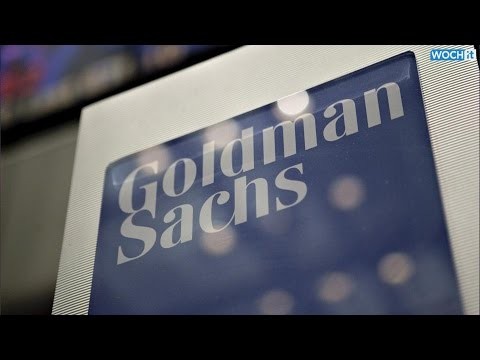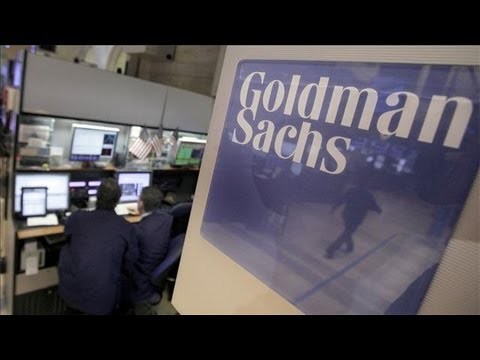Goldman Sachs Q2 Doubles Profit Boosted by Underwriting
Post on: 12 Июнь, 2015 No Comment

About
Getty Images By CHRISTINA REXRODE
NEW YORK — Goldman Sachs says its second-quarter profit doubled, boosted by a surge in stock and bond underwriting.
Profit was $1.9 billion after payments to preferred shareholders, compared with $927 million a year ago. Per share, those profits were $3.70. Analysts polled by FactSet had expected $2.83.
Revenue was $8.6 billion, up 30 percent from $6.6 billion a year ago. That also beat the expectations of analysts, who had forecast $8 billion.
In a statement, CEO Lloyd Blankfein called the quarter solid, especially considering the mixed economic sentiment.
Blankfein described the U.S. economy as improving, but said that Goldman would continue to put a premium on disciplined risk management.
One way that Goldman makes money is from trading on behalf of institutional clients like pension funds and hedge funds. Revenue from the unit that trades on behalf of clients was up 11 percent.
Goldman said that market conditions became more challenging during the latter part of the second quarter as interest rates and market volatility increased.
The stock market zig-zagged and bond prices fell in late May and through most of June because investors were trying to guess how long the Federal Reserve will continue its economic stimulus program. Goldman’s revenue from trading mortgages and interest-rate products fell, though higher stock market values and increased activity in Asia helped the bank’s stock-trading business.
Even with the fitful quarter, conditions were still calmer than in the year-ago period, when worries about Europe’s debt woes were much more acute and Washington was deadlocked over budget issues. Besides, many investors see volatility as a reason to get into markets because there are more opportunities to trade.
The biggest increase in Goldman’s earnings came from underwriting stocks and bonds, where revenue soared 45 percent.
The bank said it set aside more money for potential lawsuits and regulatory proceedings, but didn’t give details. A former Goldman Sachs trader, Fabrice Tourre. went to trial Monday in New York, accused of selling mortgage-backed securities that he knew were going to fail. Goldman already settled related charged with the Securities and Exchange Commission in 2010, though it still faces private lawsuits.
Goldman Sachs Group’s (GS ) stock was down 97 cents, or 0.6 percent, in late-morning trading to $162.09.
So you’re seeing a lot of strength in housing, and it’s coming from almost every place geographically. So that’s sort of the big winner. Auto and that whole complex is a big winner. They’re doing over 15 million cars this year, up from 8.5 at the bottom. And then you have the energy complex, which is really, really a revolution. This is hard to underestimate the impact of energy and all the natural gas that’s being produced and all the subsidiary types of things that come from that activity. And if you add on top of that, technology which is still a very big pocket of strength and quite robust in the United States, you’ve got some really good stuff happening.
On the other hand we do have the U.S. government at work, trying to decrease growth as rapidly as they can. And so they’ve, unfortunately, had some success in that area, and that leaves us somewhere in the 2%-plus area.
We think that the next big risk in the industry is rising interest rates. And so we’re very focused on what happens when interest rates return to a more historically normal level.

On the positive side, economic fundamentals in the United States continue to improve. The main impediment to growth appears to be the speed and nature of the withdrawal of fiscal stimulus. Debate has actually now opened up on how and when to withdraw some of the monetary expansion. All of this is very good news.
At the same time, the rest of the world looks no stronger. Europe is mired in a recession, Asian growth seems more modest and Japanese attempts to restimulate their economy through monetary stimulation have set off further downward pressure on interest rates and currency values.
The overriding driver of recovery in the housing market remains the underproduction of both single and multifamily product throughout the economic downturn and up to and including this year. Over the past 5 years of housing production, we’ve built an average of under 700,000 single and multifamily homes total per year, with an average obsolescence rate of approximately 300,000 per year. This compares to a need for new dwelling units per year of between 1.2 million and 1.5 million.
This year, a significantly stronger year of building activity, we will produce approximately 950,000 single and multifamily dwellings, and again, will underserve the country’s needs. We have more than absorbed the overbuilding of the early to mid-2000s, and have been underproducing for a protracted period of time. This shortfall will have to be made up, and the builders of both multi and single-family products have been pushing to increase production.
I think when you look at some of the economic indicators, housing starts are up, prices are up on housing. I think housing is a really important measure for us because we have a lot of jobs around that. A lot of contracting roofers, et cetera, around that. All of that is positive. And so we’re feeling like we’re coming off the end of the year with some momentum, and that will certainly help us.
I think there’s reason to be very optimistic when you consider that demographic tailwind that will continue over the next 5 to 10 years, certainly. And then when you think about just the economy itself and you look at the strength of the balance sheets of consumers and corporations, the amount of liquidity out there, combined with the depth of the housing correction, I think there’s a good argument we made that the housing cycle we’re in right now will be strongest of the last 3 that we’ve seen.
Although we have seen recent improvements in the U.S. economy, growth is relatively light and confidence remains fragile. In addition, while the market generally feels better about the tail risk in Europe, the economy is challenged.
Given the continued uncertainty in the market, we are not managing the firm with the hope that the macro backdrop will improve. We are focused on managing through a continued difficult operating environment.
The situation in Europe is not even slightly better. It’s probably slightly worse. Even if we do not have a Greece event, if you will, the environment is moving from an economic standpoint to recession. And so the mood with our clients over there is still to be thoughtful and to be very mindful about the way they invest. And when clients are thoughtful and mindful, they tend to wait a little bit more and to think further on when and how much they’re going to invest.














